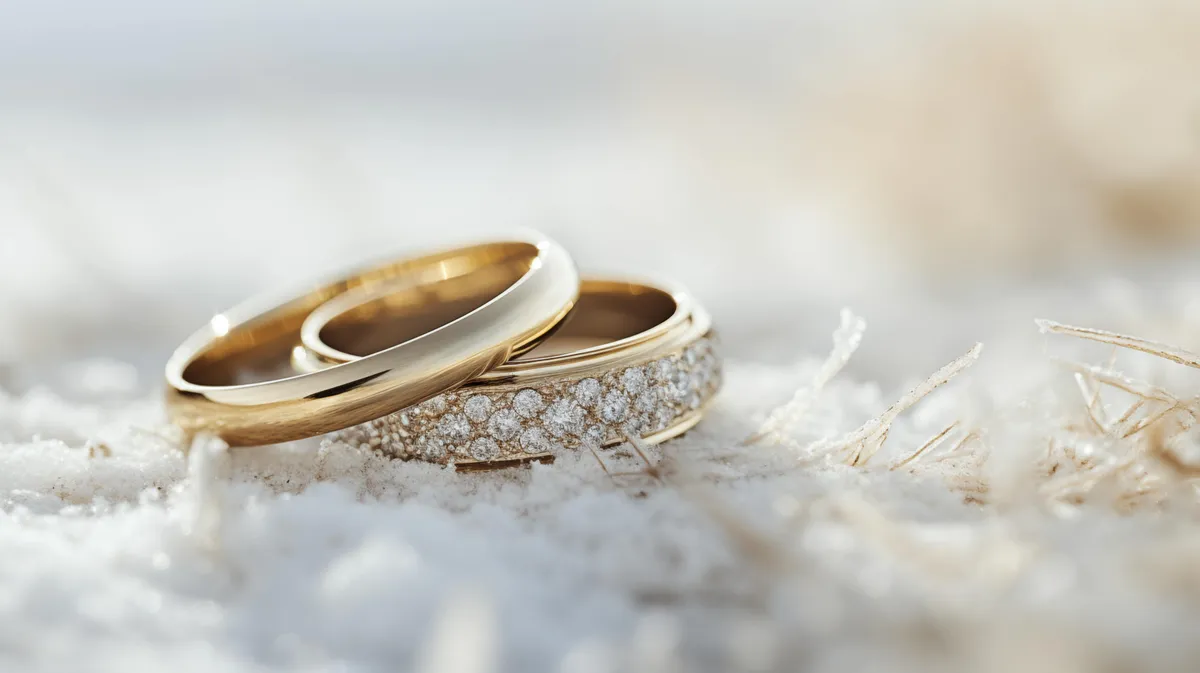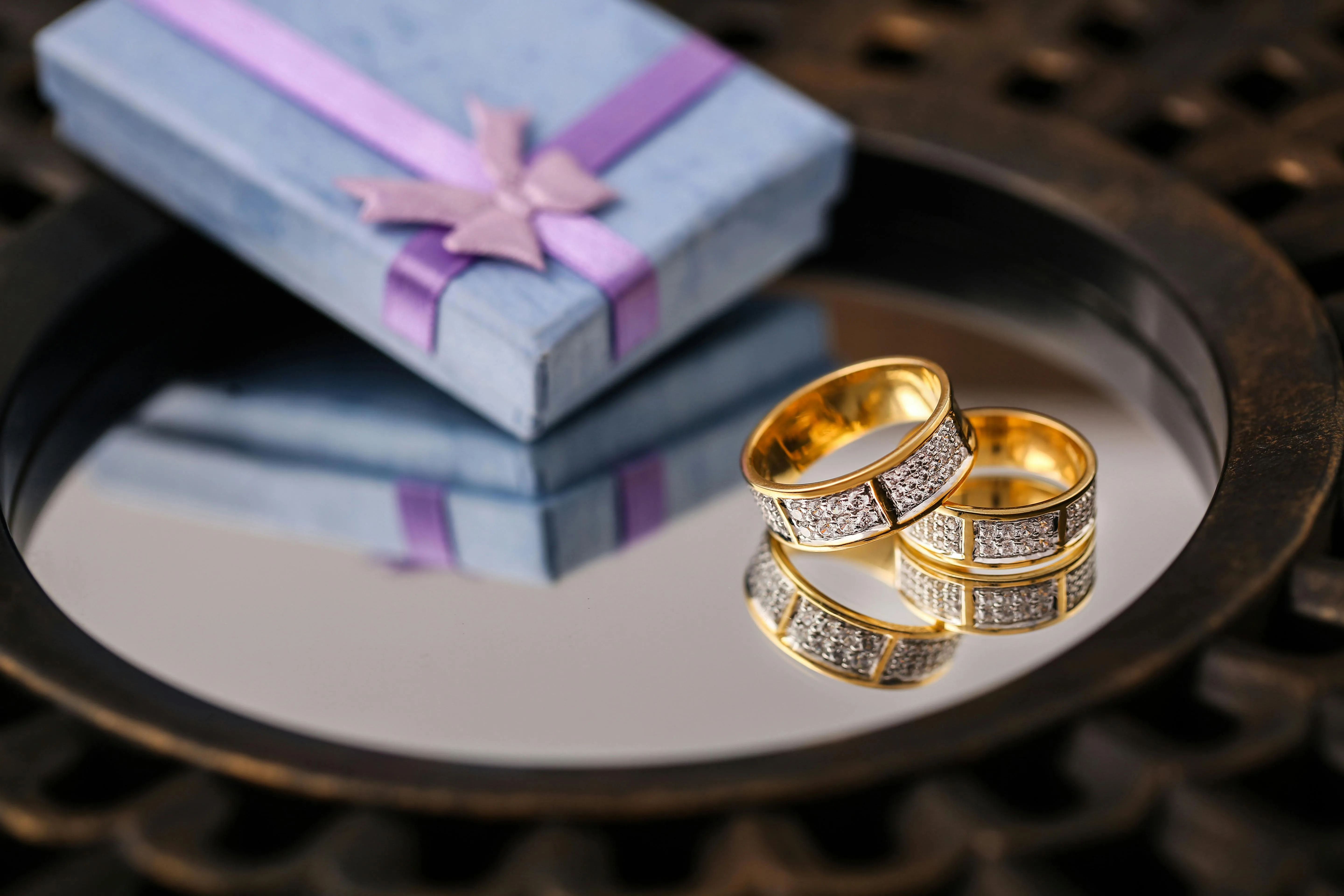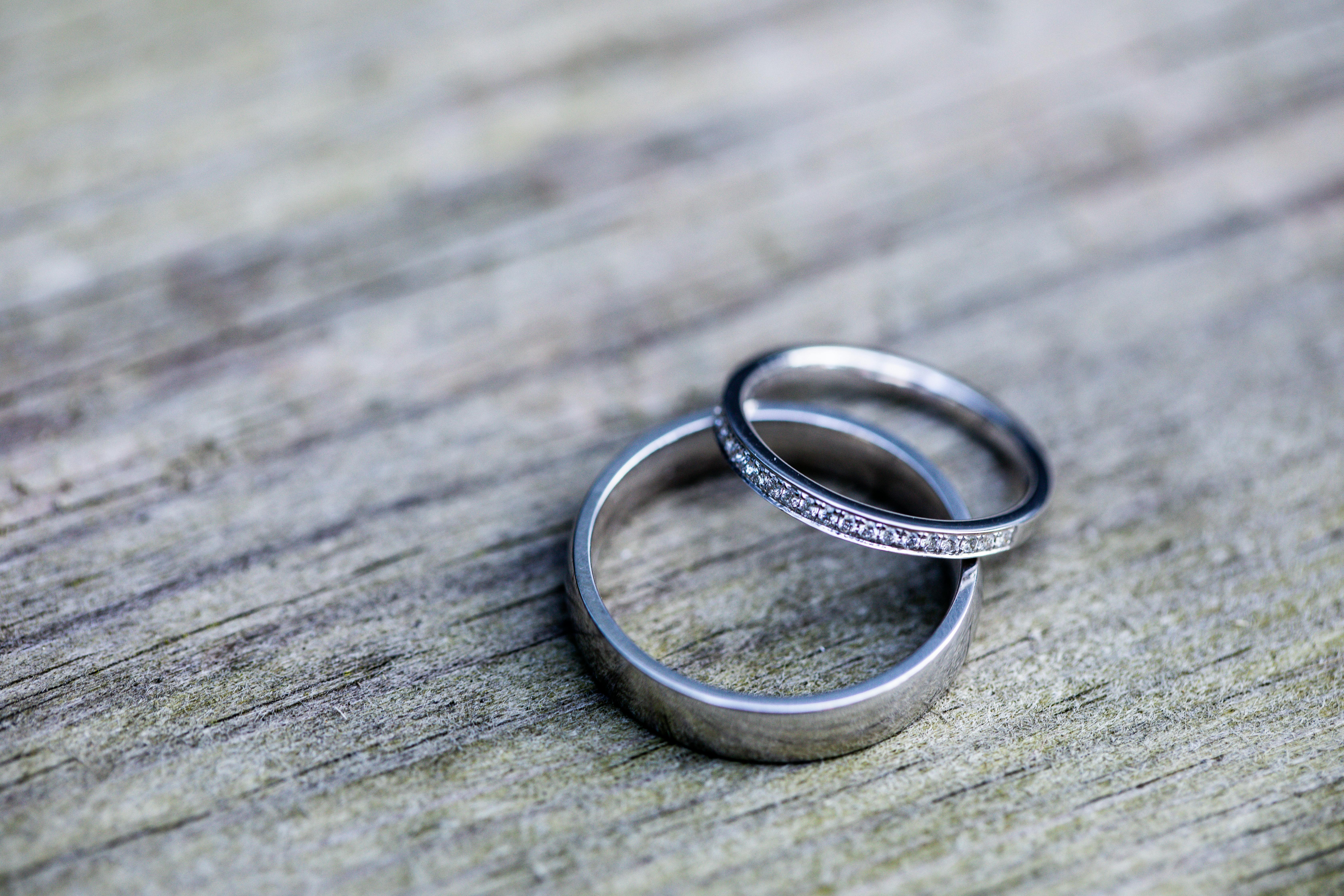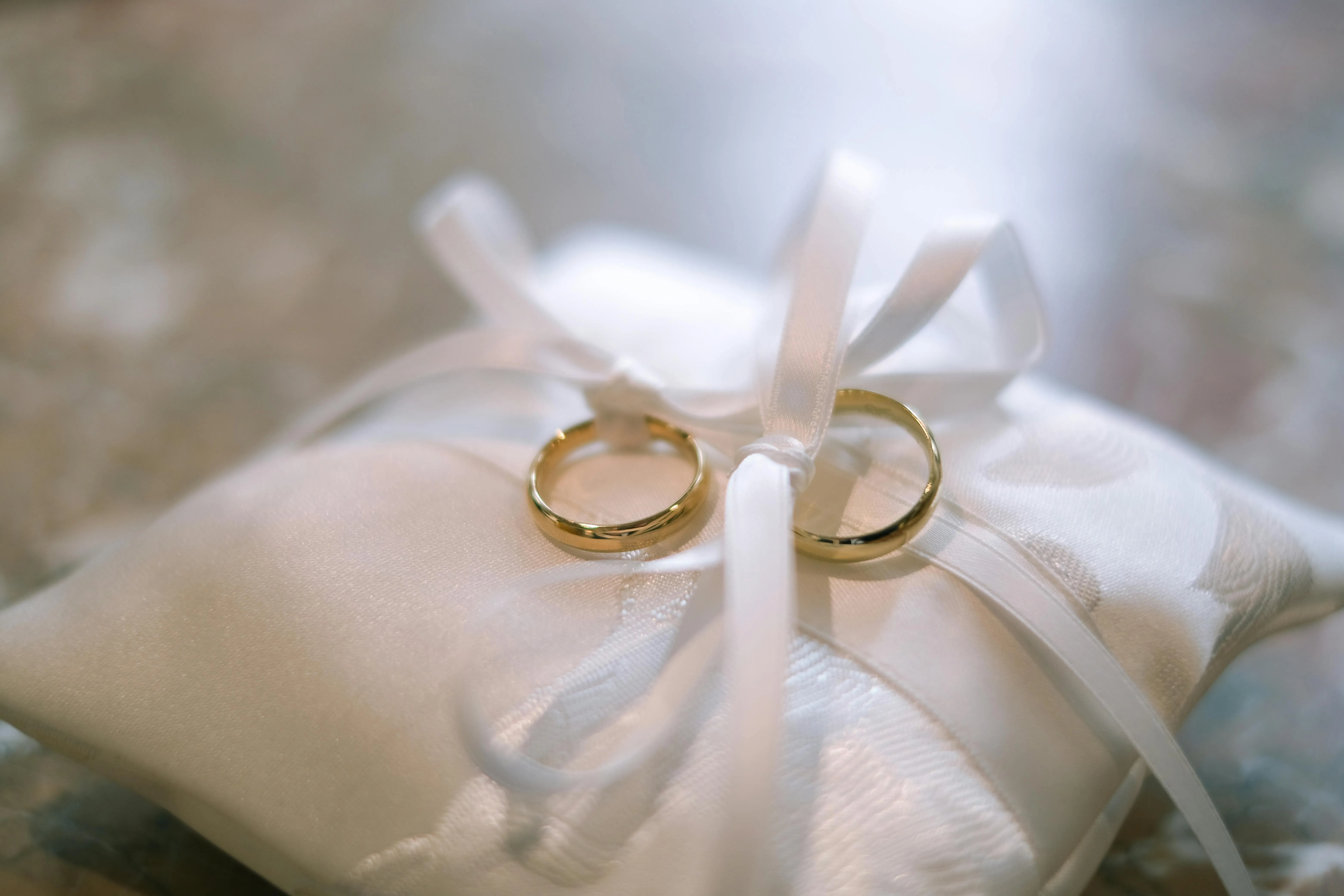
Choosing the right wedding band metal is an important decision for any bride. Understanding the popular options available can help her make an informed choice that suits her style and lifestyle. From classic gold to contemporary alternatives, each metal has its own qualities and benefits.
Today's brides often consider durability, cost, and personal taste when selecting the perfect metal. Many look for hypoallergenic options, too, ensuring comfort for those with sensitive skin. With so many choices in the market, knowing the distinct features of each type can make the process easier and enjoyable.
Key Takeaways
- Different metals offer unique benefits and styles for wedding bands.
- Understanding hypoallergenic options is important for comfort.
- Cost and durability play a significant role in choosing the right metal.
The Significance of Choosing the Right Wedding Band Metal
Choosing the right metal for a wedding band is important. It reflects personal style and can impact comfort and durability.
Common Wedding Band Metals:
- Gold: Available in yellow, white, and rose. Gold is timeless and classic.
- Platinum: Known for its strength and premium look. Platinum is hypoallergenic.
- Palladium: Similar to platinum but lighter and less expensive. It also has a natural white color.
- Titanium: Very strong and lightweight. It’s a good choice for active individuals.
- Silver: Affordable and appealing, but less durable. Silver may tarnish over time.
Each metal has different properties that may affect its longevity and appearance. For example, platinum does not wear down easily, while silver may scratch more.
Comfort is another factor. Some metals can irritate the skin. Choosing a hypoallergenic metal is wise for sensitive skin.
The band’s metal can also affect maintenance needs. For instance, gold and platinum require regular polishing to maintain their shine.
Finally, the budget often plays a role. Some metals are more expensive than others, which can impact what a couple chooses.
Selecting the right metal is about finding a balance between style, comfort, durability, and cost. It is a key part of a couple's wedding journey.

Gold
Gold remains a top choice for wedding bands due to its beauty and durability. The different types of gold—yellow, white, and rose—each offer unique looks and qualities. This variety helps couples find a style that best fits their personality and preferences.
Yellow Gold
Yellow gold is classic and timeless. It is made by mixing pure gold with metals like copper and zinc. This type of gold is popular because of its rich color and warm tone.
Many people associate yellow gold with traditional wedding bands. It looks great with various skin tones. For maintenance, occasional polishing can keep it looking shiny.
Yellow gold is also durable. While pure gold is soft, the added metals make it stronger. This means it can resist scratches and damage, making it a practical choice for everyday wear.
White Gold
White gold has a modern and elegant appearance. It is created by combining gold with metals like palladium or nickel, giving it a silvery color. Many couples appreciate its contemporary look.
White gold wedding bands often come with a rhodium plating to enhance shine. This plating can wear off over time but can be reapplied for a fresh look.
Care for white gold involves regular cleaning to maintain its luster. This can be done at home or by a professional jeweler. Despite the extra care, its sleek design and durability make it a favorite.
Rose Gold
Rose gold offers a romantic and vintage feel. It is made by blending gold with copper, which gives it a pinkish hue. This unique color has become increasingly popular in recent years.
Many brides love rose gold for its warmth and subtle glow. It pairs beautifully with diamonds and other gemstones. Its distinct look sets it apart from traditional gold choices.
Rose gold is sturdy due to the copper content, making it ideal for everyday wear. It may require less maintenance than other gold types, but regular cleaning will keep it looking great. This metal appeals to those seeking something different yet timeless for their wedding band.
Platinum
Platinum is a top choice for wedding bands. It is one of the most durable and dense metals. This makes it resistant to scratches and wear over time.
Many couples appreciate platinum's natural white shine. Unlike white gold, it does not require rhodium plating. This means it will keep its color without fading.
Platinum is also hypoallergenic. This is a key factor for those with sensitive skin. It is less likely to cause allergic reactions compared to other metals.
The weight of platinum is another appealing feature. It feels substantial on the finger, offering a sense of quality. Many people enjoy this weight as part of their ring experience.
When it comes to price, platinum can be more expensive than gold or silver. The cost reflects its rarity and superior qualities. Couples should consider their budget when choosing this metal.
Here are some key points about platinum:
- Durability: Highly resistant to scratching.
- Color: Maintains a natural white hue.
- Hypoallergenic: Safe for sensitive skin.
- Weight: Feels substantial and high-quality.
- Cost: Generally more expensive due to rarity.
Choosing platinum means selecting a long-lasting and beautiful option for a wedding band.
Silver
Silver is a classic choice for wedding bands. It has a bright, shiny appearance that many find appealing. This metal is often associated with elegance and sophistication.
Properties of Silver:
- Color: Bright white and shiny
- Weight: Lighter than gold and platinum
- Durability: Softer than other metals, can scratch easily
Many couples choose silver for its affordability. It provides a beautiful look without breaking the bank. It is also easily available in various styles and designs.
Types of Silver Used:
- Sterling Silver: Contains 92.5% silver mixed with other metals for strength.
- Argentium Silver: A type of sterling silver that resists tarnish.
Silver does require maintenance. Regular cleaning helps keep it looking new. It can tarnish over time, but this is easy to polish away.
Choosing a silver wedding band can be a great option for those seeking beauty and value. With its charm, it remains a popular pick for today’s brides.

Palladium
Palladium is a popular choice for wedding bands. It is part of the platinum group of metals and is known for its strength and durability.
One key feature of palladium is its lightweight nature. This makes it comfortable for daily wear. Many people prefer it over heavier options like gold or platinum.
Palladium has a natural white color that doesn’t fade. It doesn’t need rhodium plating, which is often required for white gold. This keeps the ring looking shiny without extra maintenance.
Here are some benefits of choosing palladium:
- Hypoallergenic: Safe for sensitive skin.
- Resistant to tarnish: Maintains its appearance over time.
- Eco-friendly: Often sourced from recycled materials.
Palladium rings can be more affordable than platinum while offering similar qualities. This combination of beauty, strength, and value makes it a great option for modern brides.
It's important to consider the style and setting when choosing a palladium band. They can come in various designs, from classic to modern, making them versatile for any personal taste.
Alternative Metals
Alternative metals are becoming popular choices for wedding bands. They offer unique styles and durability, making them appealing for many couples today.
Titanium
Titanium is known for its strength and lightweight properties. It is resistant to scratching and bending, which makes it a practical choice for daily wear.
This metal is also hypoallergenic, making it suitable for those with sensitive skin. Titanium comes in various colors and finishes, allowing for personalized designs.
Another benefit is its corrosion resistance. This means it can withstand exposure to moisture and chemicals without damage. Overall, titanium offers a perfect blend of durability and style.
Tungsten
Tungsten is one of the hardest metals used for jewelry. It is highly scratch-resistant and maintains its polish over time, making it ideal for someone seeking a long-lasting ring.
Tungsten bands come in various styles, including classic and modern designs. Its weight gives a substantial feel, appealing to many wearers.
While tungsten is sturdy, it can be brittle. It's essential to handle it with care to avoid chipping. With its unique appearance and durability, tungsten remains a top choice for modern couples.
Stainless Steel
Stainless steel is popular for its affordability and durability. It is resistant to rust and tarnishing, making it a practical option for everyday wear.
The metal can be polished to a high shine or have a matte finish. Many couples choose stainless steel for its modern look and versatility.
It can be easily customized with engravings or inlays. While it may not have the same high status as precious metals, stainless steel offers a stylish and long-lasting alternative.
Metal Allergies and Hypoallergenic Options
Some people are allergic to certain metals. This can cause skin irritation or rashes when wearing jewelry. It is important for brides to consider their allergies when choosing wedding bands.
Common Allergens in Wedding Bands:
- Nickel: Often found in white gold and some stainless steels.
- Copper: Present in some alloys, especially in cheaper options.
- Zinc: Used in many mixed metal rings.
Brides should look for hypoallergenic metals. These metals are less likely to cause allergic reactions.
Popular Hypoallergenic Options:
- Titanium: Strong, lightweight, and very durable.
- Platinum: A rare metal that is naturally hypoallergenic.
- Palladium: Similar to platinum, it is also hypoallergenic.
- 14k or higher gold: Gold that has a higher purity level tends to have less nickel.
When choosing a wedding band, consider custom options. Many jewelers offer rings made from hypoallergenic materials. This ensures comfort and safety.
Brides should discuss any allergies with their jeweler. A professional can provide options suited to their needs. This helps in selecting a band that looks great and feels good to wear.
Durability and Care for Wedding Band Metals
Choosing a wedding band involves considering the metal's durability. Different metals have various strengths and weaknesses.
Common Wedding Band Metals
Meral Durability Care Instruction
Gold Moderate Clean with a soft cloth.
Platinum High Avoid harsh chemicals.
Silver Low Polish regularly to prevent tarnish.
Gold is popular but can scratch easily. It needs regular cleaning to maintain its shine.
Platinum is strong and resistant to scratches. It requires less maintenance than gold, making it a great choice for active wearers.
Silver rings are beautiful but can tarnish over time. Regular polishing helps keep them looking good.
Titanium is very strong and lightweight. It doesn’t tarnish, making it low maintenance.
Palladium offers similar benefits to platinum. It’s durable and needs little care beyond regular cleaning.
Proper care for wedding bands can extend their life. Simple practices like cleaning and storing rings in a soft pouch help prevent damage.

Cost Comparison of Wedding Band Metals
When choosing a wedding band, cost is an important factor. Different metals come with different price tags. Here is a comparison of some popular wedding band metals:
Metal Average Cost (per gram)
Gold (14K) $30
Platinum $40
Titanium $6
Silver $0.70
White Gold (14K) $35
Palladium $25
Gold is a classic choice. The price can vary depending on its karat.
Platinum is more expensive due to its rarity and durability. It is often chosen for its long-lasting qualities.
Titanium is a budget-friendly option. It is lightweight and strong, making it a popular modern choice.
Silver is the least expensive. It can tarnish but is still chosen for its shine and affordability.
White Gold offers a stylish look that resembles platinum but at a lower cost.
Palladium costs less than platinum but offers similar properties.
Prices can change based on market trends. It helps to shop around and compare. Budget will play a key role in the final decision.
Ethical and Sustainable Metal Choices
More couples are considering ethical and sustainable metals for wedding bands. This choice reflects values around the environment and fair labor practices.
Common Ethical Metals:
- Recycled Gold: Made from existing gold, it reduces the need for new mining.
- Lab-Created Diamonds: They have the same quality as mined diamonds but are created in a lab.
- Platinum: Often sourced from responsible mines, it has a long lifespan.
Using these metals can lessen the negative impact on the planet. There's less pollution and energy use compared to traditional mining.
Certifications to Look For:
- Fair Trade Certification: Ensures the metal is sourced fairly.
- Responsible Jewelry Council (RJC): Members follow strict ethical standards.
Couples should also consider local jewelers who focus on sustainability. They are more likely to use ethical practices in their work.
Choosing ethical metals not only supports the couple's values but also promotes positive change in the industry. This is an important step toward a more sustainable future.
Custom Designing Your Wedding Band
Custom designing a wedding band allows couples to create something truly unique. Many choose to reflect their personal style and story in the design.
Popular Options for Customization:
- Engravings: Names, dates, or special messages can personalize a band.
- Gemstones: Adding a birthstone or favorite gem can enhance the look.
- Mixed Metals: Combining different metals offers a unique visual appeal.
The process usually starts with an idea. Couples can bring sketches or images as inspiration to a jeweler.
Things to Consider:
- Budget: Custom designs can vary greatly in price.
- Style: Consider whether the design fits both partners’ styles.
- Comfort: Ensure the band is comfortable for everyday wear.
Choosing a reputable jeweler is important. They can guide through material options and help refine the design.
After discussing ideas, the jeweler will create a mock-up. This gives a sense of how the final band will look. Adjustments can be made before the final piece is crafted.
Custom designing a wedding band makes the piece meaningful. It carries personal significance and can be cherished forever.
Frequently Asked Questions
Many brides have specific concerns when choosing wedding band metals. These questions cover popular choices, durability, traditional options, and materials to avoid.
What are the most sought-after metals for contemporary bridal wedding bands?
The most popular metals for bridal wedding bands today include white gold, yellow gold, rose gold, and platinum. Each metal offers a unique look and feel. Couples often choose based on personal style and budget.
Which ring materials are best suited for everyday wear without tarnishing?
Metals like platinum and titanium are excellent for daily wear because they are durable and resistant to tarnishing. Gold, especially when alloyed with other metals, can also be suitable if properly cared for.
What metals are traditionally considered ideal for wedding rings?
Traditionally, gold and platinum are seen as ideal for wedding rings. Yellow gold has been favored for its classic look. Platinum is admired for its strength and enduring quality.
Are there any ring materials that should be avoided for wedding bands?
Some materials, like silicone or certain base metals, might not be ideal for wedding bands. They can wear out quickly or cause allergic reactions. It's best to choose higher-quality materials for lasting wear.
How do tungsten wedding bands compare to other popular metal choices?
Tungsten bands are known for their strength and scratch resistance. They offer a modern appeal but can be heavier than other metals. While they are durable, they can be harder to resize compared to gold or platinum.
Why might platinum be favored for engagement rings by today's brides?
Many brides prefer platinum for engagement rings due to its durability and luster. Platinum is hypoallergenic, making it suitable for those with sensitive skin. Its timeless quality adds to its appeal for many couples.
